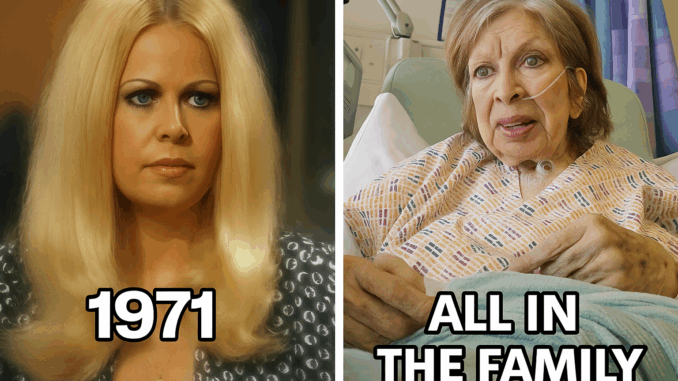
Learn how All in the Family introduced Beverly LaSalle—a groundbreaking queer character—and how her shocking, tragic death during a hate crime left an emotional mark on both the Bunkers and TV history.
All in the Family Broke Ground with a Queer Character—But Her Tragic Fate Still Haunts Viewers
All in the Family wasn’t just pushing boundaries—it was smashing them. Amid Archie’s bigotry and Edith’s innocence, the show bravely introduced Beverly LaSalle, a compassionate drag character who challenged stereotypes and sparked empathy. Here’s how Beverly’s arc remains one of television’s most powerful LGBTQ-themed moments.
1. A Brave Introduction
In a 1975 episode, “Archie the Hero,” Archie rescues a woman who’s collapsed in his taxi and discovers it’s Beverly LaSalle, a drag performer. Their awkward introduction quickly develops into warmth—a bold move at the time for mainstream TV.
2. More Than a Punchline
Beverly returns in a later episode, “Beverly Rides Again,” where she shares a warm dinner with the Bunkers. Their bond grows beyond novelty—she becomes a genuine family friend.
3. Humanizing a Drag Performer
At a time when LGBTQ characters were often ridiculed or erased, Beverly is portrayed with dignity, kindness, and humor, defying the era’s norms and stereotypes.
4. A Heartbreaking Loss
In the two-part episode “Edith’s Crisis of Faith,” Beverly is fatally attacked in a hate crime while walking home. Mike survives, but Beverly doesn’t—her death is sudden and jarring, forcing viewers to confront the devastating reality of hate.
5. Edith’s Devastating Doubt
Edith is shattered. The incident shakes her faith—how could such violence happen to someone so kind? Her grief becomes a powerful reflection on compassion, humanity, and belief.
6. Breaking LGBTQ Barriers
Beverly made multiple appearances—unusual for queer characters in the 1970s. Her story arc allowed audiences to see a more nuanced, empathetic representation—far from the caricatures of the time.
Why Beverly LaSalle’s Story Endures
-
Bold for its time: All in the Family confronted anti-LGBTQ violence and prejudice head-on, in prime-time.
-
Emotional authenticity: The impact on Edith, Archie, and the audience was raw, honest, and lingering.
-
Cultural watermark: Beverly paved the way for more empathetic LGBTQ portrayals in television that followed.
Summary Table
| Element | Insight |
|---|---|
| Character | Beverly LaSalle—a drag performer introduced with warmth and dignity |
| Role in Show | Family friend who challenges prejudice and elicits empathy |
| Fate | Killed in a brutal hate crime, stirring grief and reflection |
| Legacy | Landmark LGBTQ representation with emotional and cultural resonance |
Beverly LaSalle wasn’t just a character—she was a bold statement on love, loss, and humanity during a time when few dared to tell that story on television. Would you like me to add more SEO-friendly keywords like “Beverly LaSalle All in the Family,” “first drag character sitcom,” or “TV hate crime portrayal history”? Just let me know!
